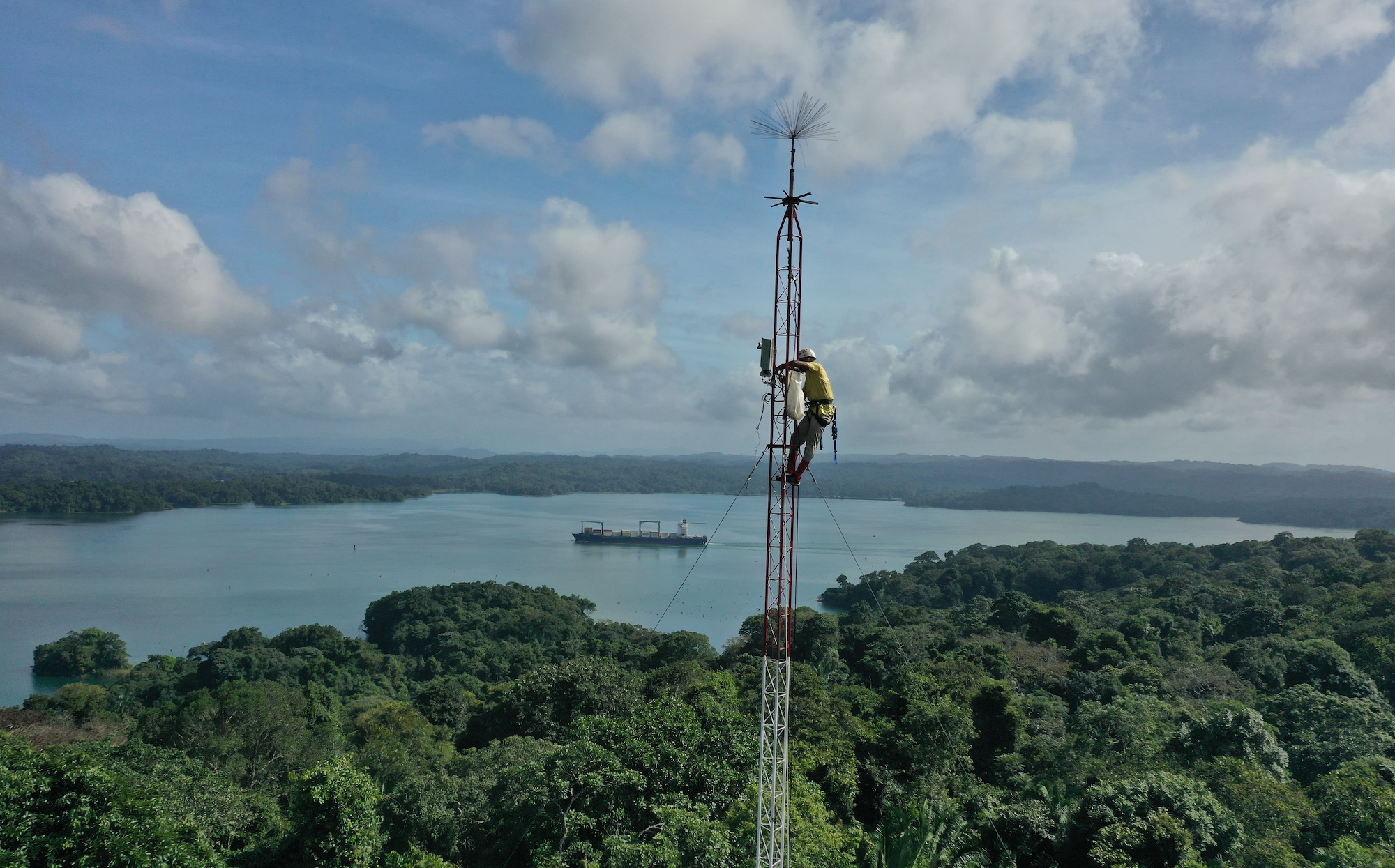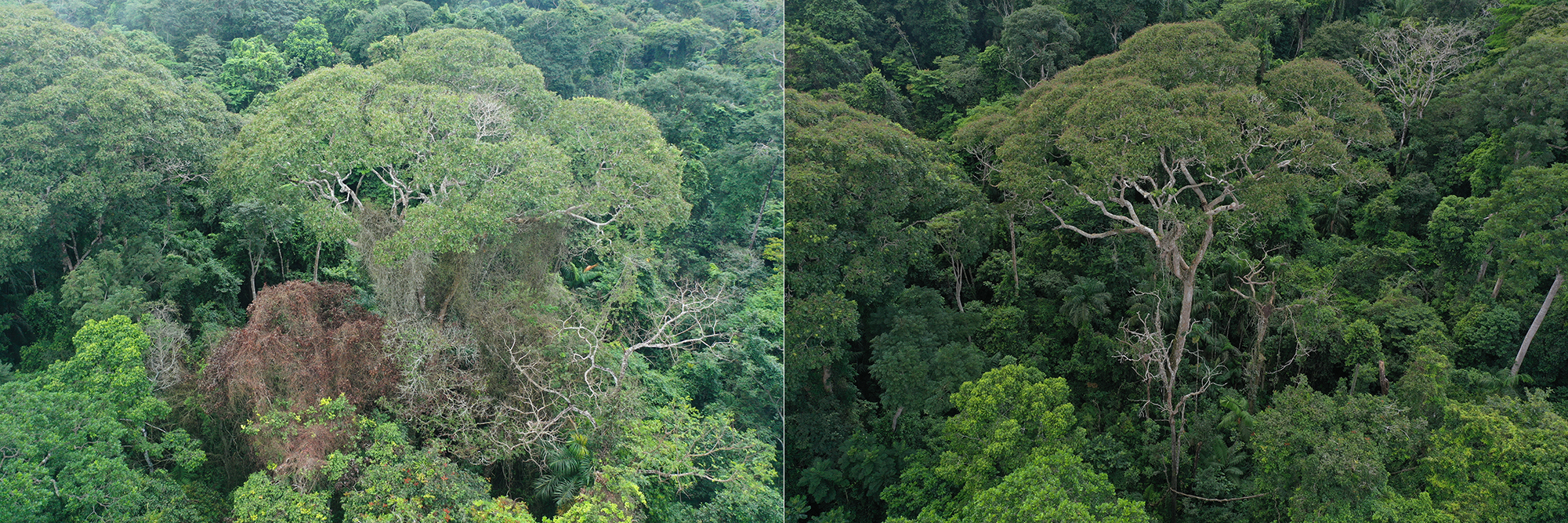Lightning is a major threat to big trees, even where forest fires are rare. However, natural selection is a powerful force, and one species of forest giant has learned to make lemonade out of life’s lemons, new research suggests. Not only have they become able to survive lightning strikes that kill others, their health is better after a strike than before.
ADVERTISEMENT
There’s a scene in Ted Lasso where one character tells another, “You deserve someone who makes you feel like you’ve been struck by fucking lightning.” The message to know one’s worth and not settle for mere adequacy has proven so popular the clip has been one of the show’s most shared on social media. Nevertheless, few would take it too literally. After all, after being struck by lightning people usually just feel lucky to be alive, not like they’ve found the love of their life.
People, but apparently some trees really are that happy. In 2015, Dr Evan Gora of the Cary Institute of Ecosystem Studies was surprised at the survival of a Dipteryx oleifera tree he found in Panama, despite trees around it being killed and a parasitic vine being blasted right out of its crown. “Seeing that there are trees that get struck by lightning and they’re fine was just mind-blowing,” Gora said in a statement.
The event made such an impression, Gora started noticing that when he and his colleagues encountered other trees that had survived the powerful tropical bolts they were frequently D. oleifera as well. They decided to investigate the previously untested hypothesis that some trees have evolved mechanisms to survive lightning.
Three years ago, the team published evidence some species of tree are much more lightning-proof than others, but their follow-up paper reaches a far more remarkable conclusion: D. oleifera actually benefit from a zap that would kill others.
To establish a suitable sample size, Gora and colleagues used a lightning location system and found 94 lightning strikes in Panama’s Barro Colorado Nature Monument, hitting 93 trees. They measured the health of the trees struck directly and their neighbors two to six years later.

This tower might look like a lightning attractor, but Technician Cesar Gutierrez climbed it to install instruments for finding lightning strikes in the forests around it.
Image credit: Evan Gora / Cary Institute of Ecosystem Studies
It seems for D. oleifera, lightning gives them superpowers. The nine D. oleifera in the sample all survived with little damage, compared to 56 percent mortality for the sample as a whole. On measures such as crown and trunk condition and parasite infestations, the Dipteryx consistently rebounded quickly from the strike to become healthier than before.
ADVERTISEMENT
“It’s better off for a Dipteryx oleifera tree to be struck than not,” Gora said.
Drones operated by Gora and colleagues found that D. oleifera tend to be 4 meters (13 feet) taller than their nearest neighbors, which the team attribute to others needing to regrow after lightning, sometimes from the forest floor.

A comparison of a Dipteryx oleifera just after it was struck by lightning, and years later when trees around it have died, benefiting from the reduced competition.
Image credit: Evan Gora / Cary Institute of Ecosystem Studies
For other trees, sticking up like that would be a mixed blessing. It would mean more access to sunlight, but also attract lightning strikes, but for the Dipteryx that’s a win-win.
On the other hand, growing near a D. oleifera is a dangerous business. Neighboring trees were 48 percent more likely to die in the course of the study than those living near big trees of other species. An average of nine neighboring trees were killed per strike on a D. oleifera, despite not being the ones hit directly, because when the lightning hits a Dipteryx, it can jump along branches that touch neighbors or along liana vines.
ADVERTISEMENT
This capacity makes a big D. oleifera is 14 times more likely to produce offspring than if it lacked lightning tolerance, the team calculated.
Knowing this, one might ask why Dipteryx don’t rule the world. However, even though there are 35-67 million lightning strikes in tropical forests each year, there are so many trees that being struck is a rare fate for each. The authors calculate that on average each D. oleifera is only struck once every 56 years. Over lifespans of centuries that still offers a measurable boost, but also gives plenty of time for other factors, such as greater drought sensitivity, to balance this advantage out.
Like many large trees, D. oleifera has high mortality when small, but those whose trunks reach 60 centimeters (2 feet) wide have very long lives.
The work leaves open the question of how D. oleifera manage this feat, given just how much energy lightning bolts can transmit. The team did find evidence of three other species that also appear somewhat lightning-tolerant, but need larger samples for confirmation.
ADVERTISEMENT
A dozen Dipteryx species are known, but most are native to South, not Central, America, so do not exist in the team’s range, which is the only forest on Earth to have been studied this way. Consequently, we don’t yet know if waiting for lightning to strike is a thing for the whole genus, or just this species. However, the authors note anecdotal accounts from around the world of trees that seem to be immune to normally lethal lightning.
In an example of how good science studying one topic can lead to something unexpected, the work is a spin-off of Gora’s main project, investigating the way lightning affects forests’ carbon storage.
The study is published in New Phytologist.
Source Link: Some Tropical Trees Like The Feel Of Lightning On Their Branches